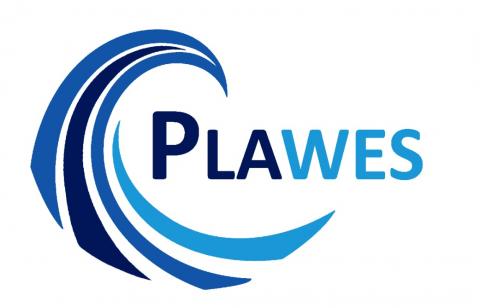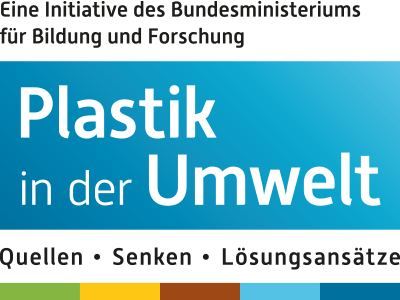PLAWES
PLAWES

Prof. Dr. Christian Laforsch
University of Bayreuth
Chair of Animal Ecology I / UBT
Universitätsstraße 30
95447 Bayreuth
Phone: +49 921 / 55-2651
e-mail: christian.laforsch@uni-bayreuth.de
Dr. Gunnar Gerdts
Alfred Wegener Institute
Helmholtz Centre for Polar and Marine Research (AWI)
Kurpromenade
27498 Helgoland
Phone: +49 4725 / 819-3245
e-mail: gunnar.gerdts@awi.de
In PLAWES, the modelling system of the German national park Weser-Wadden Sea was the first large European river basin that was investigated in detail regarding its microplastic pollution. PLAWES conducted a pioneering study of the microplastic contamination from the headwaters to the North Sea (northern Atlantic Ocean) that comprised an interdisciplinary and integrated ecosystem approach and accounted for various point sources (wastewater treatment plants, separation systems) and diffuse sources (drainage, atmosphere) of pollution. The results were integrated into a model for identifying primary transport mechanisms and accumulation zones. The research investigated the effects of microplastics on ecosystems in the Weser-Wadden Sea system by analysing the interaction of microplastic with pathogens in biofilm and aquatic invertebrates. Outcomes of this particularly ecologically relevant aspects were used to estimate the environmental risk of microplastics for the model system, and subsequently made it transferable to other systems. In addition, the results of the analysis became part of new teaching materials in order to provide a knowledge platform for teachers, students, and parents across Europe. PLAWES generated unique data about the effects of microplastics on a large European river basin and its environment. This is significant not only for policymakers and stakeholders but also as a fundament for science-based solutions to address the microplastics problem.
Main areas of work
- Microplastics in the Weser-Wadden Sea
- Model-based balancing of diffuse and point sources of microplastic entries
- Interaction of microplastics with pathogens and biota
- Training measures to raise awareness of plastic waste
WP 0 Management, communication and dissemination
Contact person
Prof. Dr. Christian Laforsch, University of Bayreuth, Universitätsstraße 30, 95447 Bayreuth, e-mail: christian.laforsch@uni-bayreuth.de
Project partner
AWI
Short description
WP 0 ensured the targeted and efficient support of the consortium with regard to project management, communication and dissemination. WP 0 coordinated both the public relations work and the exploitation of the results achieved. WP 0 continued to coordinate the cooperation of all project partners and was therefore in close contact with all project partners. WP 0 coordinated the harmonisation with the joint research project MicroCatch_Balt with regard to sampling and processing, modelling, public relations, and data storage as well as communication with the other projects.
WP 1 Microplastics in the Weser-Wadden Sea model system
Contact person
Dr. Gunnar Gerdts, Alfred Wegener Institute, Helmholtz Centre for Polar and Marine Research, Kurpromenade, 27498 Helgoland, e-mail: gunnar.gerdts@awi.de
Project partner
UBT, UOld
Short description
The aim of WP 1 was to investigate the entire Weser river system into coastal waters with regard to microplastic pollution. The final determination of the exact sampling points was carried out taking into account the real data required for RAUMISmGROWA- MePhos and "Tidal Model" (WP 3). The entire Weser including the Lower Weser and the Wadden Sea was investigated with regard to exposure to microplastic. Two campaigns were carried out at different seasons with different water conditions on the Weser.
WP 2 Entry points – point sources and diffuse entry
Contact person
Prof. Dr. Andreas Held, University of Bayreuth, BayCEER; second affiliation: Technical University of Berlin, Department of Environmental Chemistry and Air Pollution Control, Straße des 17. Juni 135, 10623 Berlin, e-mail: held@tu-berlin.de
Project partner
AWI
Short description
The aim of WP 2 was an exemplary consideration of the input paths for microplastics by investigation of important point sources such as wastewater treatment plants and separation water sewer systems as well as the diffuse input from drains and atmosphere. For this purpose, selected sampling points in the Weser river basin were characterised taking into account different landscape areas and land use types. The focus lay on quantifying the entry points of microplastics. Sampling was synchronised with the campaigns at the Weser.
WP 3 Model-based accounting of diffuse and point-shaped MP entries
Contact person
Prof. Dr. Frank Wendland, Jülich Research Centre IBG-3, Wilhelm-Johnen-Straße, 52428 Jülich, e-mail: f.wendland@fz-juelich.de
Project partner
TI, NLWKN
Short description
The aim was a spatially resolved quantification of the microplastic emissions from diffuse and point sources and the identification of spatial load centres and accumulation zones within the river basin and estuary. The microplastic entries were modelled from different types of diffuse entry points and point sources. The work was based on the models mGROWA, MEPhos, RAUMIS, as well as a transport modelling considering the estuarine hydro- and sediment dynamics. Within the framework of the project, the model chain was improved in a targeted manner according to microplastic entry modelling in the inland and the further distribution of the microplastics in the lower reaches, estuary and apron.
WP 4 Interaction of microplastic with pathogens and biota
Contact person
Prof. Dr. Jörg Oehlmann, Goethe University Frankfurt, Max-von-Laue-Straße 13, 60438 Frankfurt am Main, e-mail: oehlmann@bio.uni-frankfurt.de
Project partner
AWI, UBT, UOld
Short description
In WP 4, the ecosystem effects of microplastic on the Weser-Wadden Sea model system were described on the basis of the two ecologically relevant aspects "Interaction with pathogens and antimicrobial resistance" and "Interaction with aquatic invertebrates".
Interaction with pathogens and antimicrobial resistance: Since biofilms are sites of increased genetic exchange and increased antimicrobial resistance occurs below wastewater treatment plants, plastics could not only contribute to the dispersion of pathogenic organisms, but also of resistance genes. The consequences of such a transfer were previously unknown. AWI therefore used molecular microbial source tracking techniques (DNA/RNA arrays for the detection of pathogenic bacteria, viruses, protozoa and virulence/resistance genes) to investigate plastic samples from the Weser region. Interaction with aquatic invertebrates: In order to generate exposure data, different mollusk species were applied in situ in the Weser, the tidal area and the Wadden Sea. Absorbed microplastic was examined in the digestive tract and in tissue samples and confirmed in parallel by pyrolysis-GC-MS and spectroscopic methods. Historical mussel samples (since 1986) from the Federal Environmental Specimen Bank (UBA) were examined using pyrolysis-GC-MS. The chronic toxicity of microplastic is characterised in laboratory experiments with mussels and worms. Different polymers were conditioned in situ and toxicologically characterised in chronic exposure experiments.
WP 5 Training measures to raise awareness of plastic waste
Contact person
Prof. Dr. Franz X. Bogner, University of Bayreuth, Didactics of Biology, Universitätsstraße 30, 95447 Bayreuth, e-mail: franz.bogner@uni-bayreuth.de
Project partner
AWI, UOld
Short description
In addition to the ethical assessment skills of students, WP 5 incorporated existing individual environmental knowledge. Innovative teaching materials with a sound reference to everyday life were evaluated for a holistic understanding regarding the burden of plastics in the model system and disseminated via an Internet teaching/learning portal. Within the work package, UBT provided a handbook for teachers and "public relations workers".
